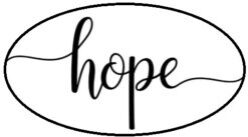In the dim corridors of an old Calcutta library, a brittle ledger lies unopened. Its pages are filled not with the exploits of kings or the declarations of empires, but with grain receipts, marriage bonds, and the ink-smudged signatures of men and women long forgotten. No historian has cited it. No textbook has quoted it. Yet within its mundane scribbles lies a truth as profound as any royal edict: history is not merely what is remembered—it is also what is forgotten.
This essay journeys through the contested terrain of what constitutes history. Is it the grand narrative of rulers and revolutions, or the quiet murmur of everyday lives? Through the lens of modern historians—especially William Dalrymple—and the growing awareness of political bias in historiography, we attempt to settle, or at least illuminate, this enduring debate.
For centuries, history was the domain of the powerful. The earliest historians—Herodotus, Thucydides, Banabhatta—wrote of kings, wars, and conquests. Their chronicles were not lies, but they were selective truths. As E.H. Carr famously noted in What is History?, “The facts are like fish on a fishmonger’s slab. The historian selects what he wants.”
This selection was rarely neutral. In medieval Europe, monks recorded the deeds of Christian monarchs while ignoring the peasantry. In Mughal India, court historians like Abul Fazl glorified emperors while glossing over the famines and rebellions that plagued their reigns. The result was a history of the few, by the few, for the few.
But history, like a river, finds new channels. In the 20th century, a quiet revolution began. Historians like Howard Zinn in the U.S. and Ranajit Guha in India began to ask: what about the others? Zinn’s A People’s History of the United States opened with a declaration: “I prefer to try to tell the story of the discovery of America from the viewpoint of the Arawaks.” Guha and the Subaltern Studies collective sought to recover the voices of peasants, tribals, and workers—those who had been “left out of the narrative.”
This shift was not merely academic. It was moral. It recognized that the foot soldier’s fear, the widow’s hunger, and the artisan’s pride were as historically significant as the emperor’s decree. As historian Natalie Zemon Davis put it, “We must listen to the rustle of the leaves, not just the thunder of the storm.”
Few modern historians embody this duality better than William Dalrymple. A Scottish historian based in Delhi, Dalrymple has spent decades chronicling India’s past—not just through the lens of rulers, but through the eyes of mystics, rebels, and forgotten scribes.
In The Last Mughal, Dalrymple reconstructs the fall of Delhi in 1857 not just through British dispatches, but through Urdu diaries, court records, and the poetry of Bahadur Shah Zafar. The result is a tapestry of voices—Hindu sepoys, Muslim poets, British memsahibs—each bearing witness to a shared catastrophe.
Dalrymple’s work is not without criticism. Some accuse him of romanticizing the past or of privileging Islamic and colonial narratives over Hindu ones. But his method—meticulous, multilingual, and empathetic—has expanded the boundaries of what history can be. As he once remarked, “History is not a courtroom. It is a conversation.”
Yet even as history expands, it remains contested. In India, the past is a battlefield. The portrayal of Tipu Sultan, for instance, oscillates between tyrant and freedom fighter depending on the political wind. Dalrymple himself has noted, “When it comes to history, people want either angels or demons”.
This polarization is not unique to India. In the U.S., debates rage over Confederate statues. In Turkey, the Armenian genocide remains a taboo. In China, Tiananmen is a blank page. Everywhere, history is shaped not just by evidence, but by ideology.
Political bias in historiography is not new. As the California Learning Resource Network notes, historians bring their own “social background, political beliefs, and cultural contexts” to their work. But in an age of social media and state-sponsored narratives, the stakes are higher. As George Orwell warned in 1984, “Who controls the past controls the future. Who controls the present controls the past.”
The danger of politicized history is not just distortion—it is erasure. When textbooks omit the Bhil revolts or the contributions of Dalit leaders, they do not merely forget; they silence. When colonial archives prioritize British voices over Indian ones, they create a skewed mirror.
Consider the case of the 1857 rebellion. For decades, British historians called it a “mutiny.” Indian nationalists called it the “First War of Independence.” But what did it mean to the weaver in Kanpur whose loom was burned, or the widow in Jhansi who fed rebels in secret? Their stories exist—in folk songs, in family lore, in forgotten letters—but they rarely make it to the syllabus.
So, what is history?
It is, perhaps, all of the above. It is the chronicle of kings and the whisper of the washerwoman. It is the timeline of wars and the ledger of grain. It is the account of civilizations and the diary of the refugee.
The task of the modern historian is not to choose between these, but to weave them together. As historian Romila Thapar argues, “History is not a single narrative. It is a dialogue between past and present, between evidence and interpretation.”
This requires humility. It requires acknowledging bias, embracing multiplicity, and listening—truly listening—to voices long ignored. It also requires institutional support: more translations, more oral history projects, more inclusive curricula.
Let us return to that ledger in Calcutta. Its pages are still brittle, its ink still faded. But now, perhaps, we read it differently. Not as a footnote to a king’s reign, but as a chapter in its own right.
History is not just what happened. It is what we choose to remember—and how we choose to tell it. In that choice lies our power, our responsibility, and our hope.
![]()

